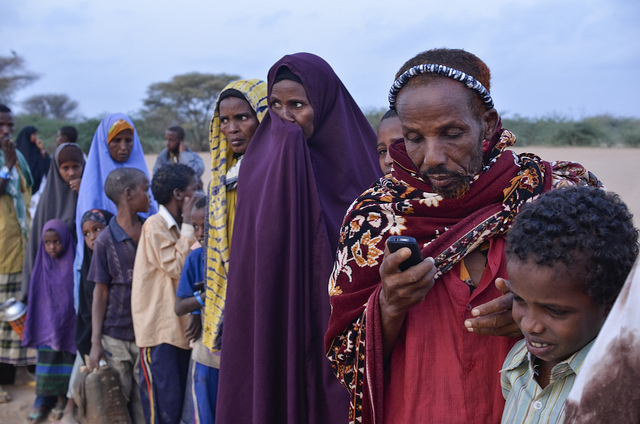Article published origionally at Thompson Reuters Foundation
Measuring resilience isn’t cheap or easy – but using mobile phones to reach people on the move can help with both problems
Climate extremes are in the headlines yet again. From the devastation of typhoon Mangkhut in Southeast Asia to Greek wildfires earlier in the year, timely reminders of the importance of resilience-building can be seen everywhere.
It’s therefore reassuring to see resilience quickly climbing to the top of the global development agenda. A $100 million investment by the Global Resilience Partnership and the British government’s £140 million commitment under the Building Resilience and Adaptation to Climate Extremes (BRACED) programme are just two examples of development funders scrambling to launch well-resourced initiatives.
Yet with new-found fame comes new challenges. In particular, how should resilience be tracked and measured?
For a start, no one can agree on a definition for resilience. More importantly, no single recipe exists for supporting the resilience of people and communities across the globe. Factors that help elderly individuals cope with the UK’s ongoing heatwave won’t necessarily be the same as those that support Indian slum-dwellers to deal with recent monsoon flooding.
To make matters harder, collecting information on resilience is costly and time-consuming. With limited resources dedicated to evaluation, most of our current understanding of resilience comes from one-off snap-shots: surveys taken at a single point in time.
These challenges are forcing evaluators to turn to new and unconventional ways of tracking resilience on the ground.
One example is Flowminder, an institute that uses Big Data to map how people respond to disasters. As Cyclone Mahesen came barrelling through Bangladesh in 2013, researchers were able to use anonymised phone records to track people’s movements after the disaster. This allowed unprecedented insights into how long it took people to recover and how people reacted to early warning messages.
Tech-enabled innovations like this are just the tip of the iceberg. A new report by the Overseas Development Institute (ODI) looks at another effort to use mobile phones to gather information on the ground – except instead of tracking people’s movements, researchers use the phones to remotely collect survey data, feeding it back in near-real time.
The team handed out phones and solar chargers to 1,200 individuals in eastern Myanmar. They then set up a small call centre run by a team in nearby Yangon, allowing individuals to be remotely contacted and surveyed every month. After extensive monsoon flooding hit the region in 2016, researchers were able to collect information on how people were coping with the floods up to 12 months later – something that would be far too costly to do using traditional household surveys.
Findings from the mobile phone survey, run by the BRACED progamme, are shedding new light on how we understand resilience.
For one, resilience has long been thought of as largely constant. The Myanmar research turns this perspective on its head, revealing resilience to be a process constantly in flux. Using the mobile phones to track levels of resilience over time shows that it fluctuates significantly after a disaster. In the case of villages surveyed, levels plunged up to six months after the floods, before rebounding rapidly and plateauing up to ten months later.
Using this kind of information to calculate the length of recovery is unprecedented and can arm development actors with valuable information in improving the effectiveness of their activities on the ground.
The surveys also show how flooding wreaks havoc not only for those directly in harm’s way, but all households in the nearby vicinity – even those that self-report as unaffected. Development actors should pay close attention: limiting resilience-building interventions to those physically affected by climate hazards may put those living around them at considerable risk.
Innovations are showcasing the power of technology in unlocking resilience. Not only do mobile surveys like those applied in Myanmar offer unparalleled opportunities to collect survey information at a fraction of the cost of normal face-to-face surveys, they also allow for data to be collected remotely when people are on the move. This is especially useful in post-disaster environments where people are often forced to relocate at short notice, or where it may be unsafe for survey teams to gain access.
While tech-enabled solutions are not a miracle cure, they offer clear opportunities in addressing some of the challenges of traditional measurement approaches. Indeed, as the UN’s secretary general, Antonio Guterres, proudly announces that resilience will be one of the central tenets of his upcoming Climate Summit in 2019, we still don’t know whether billions of pounds worth of resilience funding are having real impact.
Promoting innovation and new ideas in tracking resilience may mean that answering this question is no longer a guessing game.





